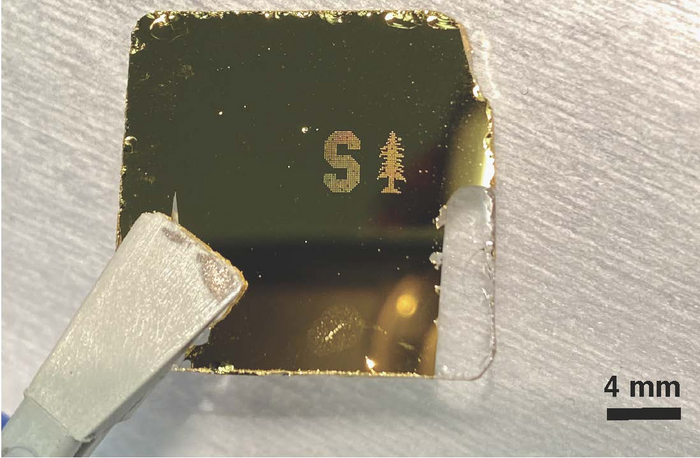
In the quest to mitigate the pervasive issue of noise pollution, researchers have turned to the natural world for inspiration, specifically to an enigmatic expert of silent flight: the owl. These nocturnal birds are renowned not only for their stealthy hunting capabilities but also for their ability to traverse the night sky virtually soundlessly. This remarkable acoustic stealth is largely attributed to the unique structural properties of their feathers and skin, which absorb a broad range of sound frequencies. Capitalizing on these biological insights, a team of scientists has engineered an innovative two-layer aerogel that emulates the owl’s integumentary system to achieve superior broadband noise reduction. The resulting material holds immense promise for revolutionizing soundproofing applications in automotive and industrial environments, sectors where noise pollution remains an unresolved hazard.
Over recent decades, the adverse health effects of chronic exposure to excessive noise have become increasingly clear. Beyond mere annoyance, elevated noise levels have been scientifically linked to hearing impairment, heightened stress responses, and exacerbation of cardiovascular and metabolic disorders, including type 2 diabetes. Effective noise abatement strategies traditionally involve soundproofing materials that generally target either high- or low-frequency noise, but not both simultaneously. High-frequency sounds such as screeching brakes differ substantially in their physical properties from low-frequency rumbles like those emitted by vehicle engines, necessitating complex multilayered materials to address the entire audible spectrum. However, such multilayer assemblies tend to be heavy, bulky, and expensive, posing logistical and economic challenges, especially in mobile and industrial applications.
Seeking a more elegant and efficient solution, the research group led by Dingding Zong explored the micro- and nanoscale architecture of owl feathers and skin to uncover the physical principles behind their exceptional sound-damping capabilities. Owls achieve near silence by employing a combination of porous skin structures and fine, fluffy feathers that interact with sound waves differently based on their frequencies. This biological blueprint became the cornerstone of their design: a lightweight, porous composite aerogel combining two distinct yet complementary layers, each engineered to target different acoustic wavelengths.
.adsslot_eHsuznLwcv{width:728px !important;height:90px !important;}
@media(max-width:1199px){ .adsslot_eHsuznLwcv{width:468px !important;height:60px !important;}
}
@media(max-width:767px){ .adsslot_eHsuznLwcv{width:320px !important;height:50px !important;}
}
ADVERTISEMENT
The fabrication of this novel aerogel relies on a sophisticated technique known as emulsion-templated freeze-reconstruction. This process begins with dispersing tiny droplets of hexane within a polymer matrix, which are then frozen to immobilize the emulsion. Subsequent removal of the frozen hexane droplets leaves behind a honeycomb-like porous architecture within the material’s first layer. This bottom layer mimics the porous structure of owl skin and is optimized for attenuating low-frequency sound waves by scattering and dissipating vibrational energy within its microscopic cavities. In parallel, the researchers synthesized a second layer composed of silicon nanofibers arranged to recreate the feathery microstructure seen in owl plumage. The soft, fibrous network of this top layer was specifically designed to dampen high-frequency sounds by absorbing vibrations effectively.
What sets this biomimetic aerogel apart from existing noise-absorbing materials is its ability to operate across a broad spectrum of frequencies with a single, integrated structure, far surpassing conventional materials that specialize in only a narrow range. Laboratory tests revealed that this dual-layer aerogel absorbed up to 58% of incident sound waves, a benchmark performance indicative of a high-efficiency noise control material. Furthermore, the material demonstrated remarkable efficacy in practical scenarios, reducing the loud rumble of automobile engines from an unsafe 87.5 decibels to a much safer 78.6 decibels, achieving reductions superior to those reached by current high-end commercial absorbers.
Besides acoustic performance, durability and mechanical stability are critical for real-world applicability. Encouragingly, the researchers subjected their aerogel to rigorous mechanical testing, including 100 cycles of compression and decompression, to simulate the stresses it would encounter in operational environments. The material withstood these challenges with minimal structural deformation, showing only a 5% change, underscoring its potential for long-term use in demanding industrial settings without compromising soundproofing capabilities.
The exploration of nanoscale and microscale structural manipulation in this project highlights an emerging paradigm in materials science where bioinspiration guides the engineering of multifunctional, high-performance composites. By harnessing intricate natural design principles that evolved over millions of years, scientists can create novel solutions that outperform traditional materials in efficiency and versatility. This owl-inspired aerogel is a prime example of how interdisciplinary approaches combining biology, chemistry, and nanotechnology can produce transformative advances in environmental health technologies.
Beyond automobiles and manufacturing facilities, the implications of this research extend to urban planning, architectural acoustics, and even aerospace engineering, where noise reduction is vital for human comfort, regulatory compliance, and environmental sustainability. Lightweight and durable sound absorbers hold the promise to replace bulky and less effective materials, enabling quieter engines, machinery, and infrastructure without compromising design or performance.
Looking ahead, optimization of this aerogel’s composition and manufacturing scalability remains an important focus. While the current two-layer design achieves impressive results, future iterations may further refine pore size distributions, fiber orientations, and polymer chemistries to enhance sound absorption across even broader frequency ranges and environmental conditions. Integration with other material properties such as thermal insulation and fire retardancy could further expand its utility in various industrial contexts.
Importantly, this research underscores the value of biomimetics not just as an inspirational tool but as a quantifiable engineering methodology. Detailed characterization of owl feather and skin structures using electron microscopy, spectroscopy, and acoustic measurements laid the groundwork for precise replication in synthetic materials. This approach contrasts sharply with trial-and-error methods, emphasizing rigorous analysis and design convergence for practical outcomes.
In summary, the development of owl-inspired coupled nanofiber-based aerogels represents a breakthrough in the ongoing battle against noise pollution, offering a lightweight, efficient, and durable solution for broadband sound absorption. This bioinspired innovation addresses critical gaps in existing soundproofing materials by combining micro- and nanoscale architectures to tackle both high- and low-frequency noise in a single material system. As urbanization and industrial activity continue to escalate globally, advancements like this will play an increasingly vital role in safeguarding public health and enhancing quality of life through quieter environments.
Subject of Research: Owl-Inspired Biomimetic Aerogels for Broadband Noise Reduction
Article Title: Owl-Inspired Coupled Structure Nanofiber-Based Aerogels for Broadband Noise Reduction
News Publication Date: May 28, 2025
Web References: http://dx.doi.org/10.1021/acsami.5c04691
References: Published in ACS Applied Materials & Interfaces
Image Credits: Adapted from ACS Applied Materials & Interfaces 2025, DOI: 10.1021/acsami.5c04691
Keywords
Chemistry, Materials Science, Materials
Tags: acoustic stealth in natureadvanced soundproofing applicationsautomotive noise control technologiesbiological insights into sound absorptionchronic noise effects on healthenvironmental health and noise exposureindustrial noise reduction solutionsinnovative soundproofing materialsnoise pollution mitigation strategiesowl-inspired noise reduction technologysilent flight of owlstwo-layer aerogel development






